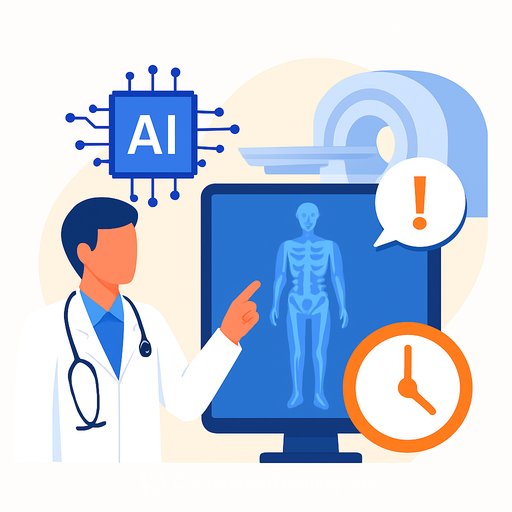AI triage model flags life-threatening trauma in seconds at Osaka medical center
Osaka General Medical Center is running a clinical trial of an image-based AI assistant that evaluates trauma severity from full-body CT scans almost instantly. The system, called the Emergency Room Automated Triage System (ERATS), is built to speed up decision-making and tighten diagnostic accuracy when minutes matter.
What ERATS does
ERATS analyzes hundreds to over 1,000 CT slices per patient and highlights suspected abnormalities in an average of eight seconds. In tests, it surfaced findings such as waveforms indicating a bleeding liver-exactly the kind of signal that can tip the team toward faster hemorrhage control.
The premise is simple: surface the most dangerous lesions first so clinicians can act while definitive reads are still in progress.
Why speed matters
According to the development team, even skilled physicians need at least five minutes to carefully review a whole-body CT. Under pressure, clinicians have said they "do not have enough time" and "might overlook something critical." ERATS is meant to reduce that risk window without replacing clinical judgment.
How it was built
ERATS was developed by a group of physicians led by Naoki Okada at the center's advanced trauma and critical care unit, in collaboration with 13 universities and medical institutions across Japan. The training corpus: 1.2 million CT images from 10,810 cases.
Every lesion used for training was manually marked-one by one-over roughly six years. The result is an assistant tuned for trauma patterns that are easy to miss under time pressure.
Clinical validation and next steps
The clinical trial started in September at Osaka General Medical Center. A second medical center will begin verification next fiscal year. The target is clinical availability within the next few years, pending results and regulatory pathways.
Staffing reality in emergency care
Emergency departments in Japan are thinly staffed at night. A national survey of critical care centers found an average of three dedicated physicians on nights, and about 60 percent of emergency hospitals with two or fewer.
Satoshi Fujimi, who heads the advanced trauma and critical care center in Osaka, said the tool can shore up facilities with limited staff. In his words, an AI diagnostic assistant will be reliable where resources are tight.
Okada expects ERATS to help raise survival-especially for patients with lesions that are initially missed and treated late. "Our hope is rescuing patients who would otherwise not survive under the current framework," he said.
What this means for your ED team
- Use case fit: whole-body CT for polytrauma, suspected hemorrhage, and multi-system injury where time-to-intervention drives outcomes.
- Workflow: run ERATS in parallel with radiologist reads; let it flag high-risk findings first while maintaining final human oversight.
- Quality loop: track false positives/negatives, turnaround time, and impact on time to hemostasis or operative decision.
- Integration: plan DICOM routing, alert display at the trauma bay, and escalation rules when ERATS flags life-threatening findings.
- Governance: define accountability, documentation, and how AI outputs are recorded in the medical record.
Related guidance
For context on imaging pathways in trauma, see the American College of Radiology Appropriateness Criteria for major blunt trauma here.
Building AI literacy on your team
If your department is evaluating clinical AI tools, a shared foundation helps. Explore role-based AI courses here to upskill clinicians, educators, and administrators on safe adoption and oversight.
Your membership also unlocks:






